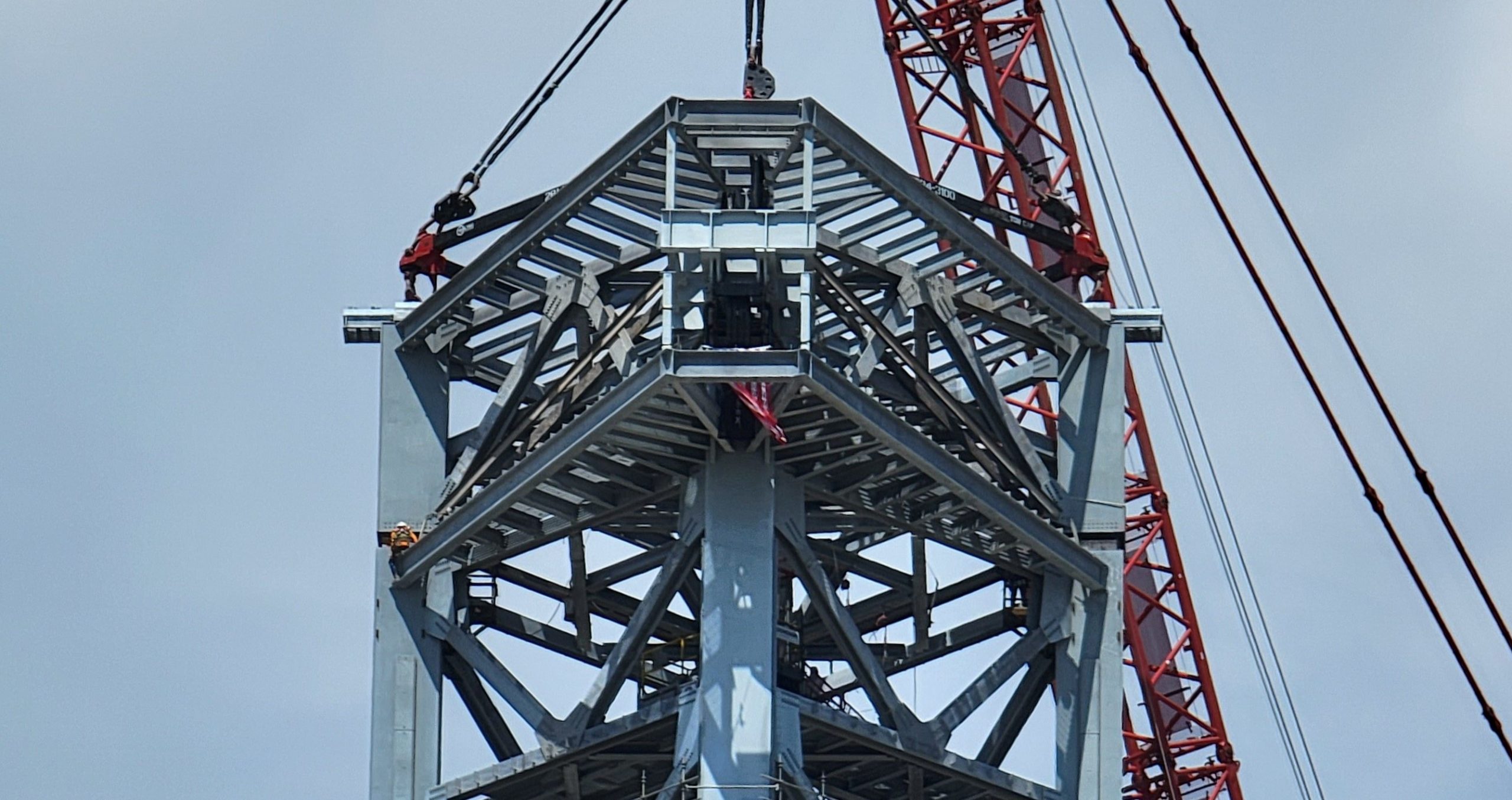
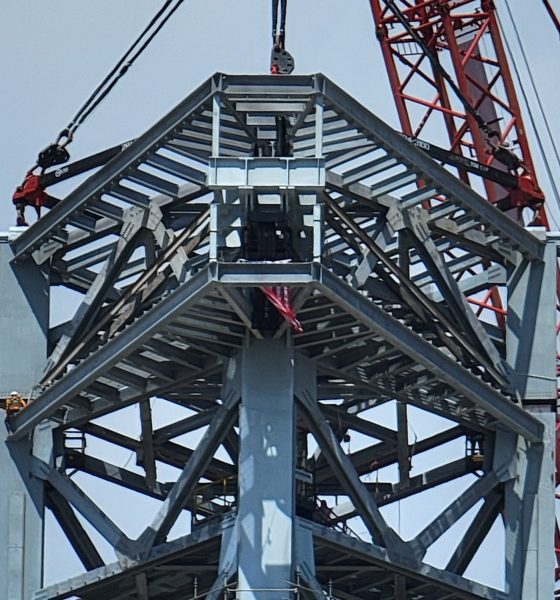
News
SpaceX Starship launch tower stacked to full height ahead of ‘Mechazilla’ transformation
Update: After an aborted attempt on Tuesday, SpaceX has successfully installed the ninth and final section of Starship’s South Texas ‘launch tower, completing what amounts to the backbone of what CEO Elon Musk has described as a rocket-catching “Mechazilla.”
With the tower now stacked to its full ~145m (~475 ft) height, SpaceX can begin the process of outfitting it with a complex system of bus-sized actuating arms, propellant plumbing for Starship, hydraulic systems, and a network of cables and pulleys. It’s also believed that the tower structure itself will need to have each of its nine bolted steel sections welded together and all four of its steel ‘legs’ filled with concrete. However, it’s not out of the question that SpaceX will be able to activate the launch tower – albeit with a very basic degree of initial functionality – with just a few more weeks of work.
After a burst of activity and custom part deliveries, SpaceX appears to be almost ready to start turning Starship’s vast launch tower into what CEO Elon Musk has described as a “Mechazilla.”
Over the last few weeks, a number of new components have begun to quickly take shape, offering the first real glimpse of what SpaceX’s latest (hopeful) innovation might look like and how it could function. Earlier this year, Musk revealed plans to forgo landing legs entirely on earthbound Super Heavy boosters – and, potentially, Starships – by using a giant tower with arms to quite literally catch the rockets out of the air.
Those unintuitive plans have triggered wild speculation as the aerospace fans that follow SpaceX closely attempted to imagine what such a solution might look like – often engaging in a sort of vague back-and-forth with Musk himself as the CEO occasionally replied to fan-made depictions and renders.
Months after the reveal, though, parts of that tower’s rocket-manipulation mechanisms have begun to arrive on a near-constant stream of flatbed trucks and something is being assembled on a concrete pad previously used as a Starship landing zone. Two distinct structures are in work at the LZ: one a large framework assembled out of banana yellow metal tubes and the other a (for now) flatter black structure being assembled out of prefabricated components reminiscent of crane parts and trusses.
Now standing some 135m (~440 ft) tall, SpaceX’s Starship ‘launch tower’ has also been assembled from 9 different segments with what looks like six vertical rails running most of the length of three of its four rectangular legs. Since they were first spotted months ago, it’s long been assumed that those tracks will support some kind of elevator-like carriage meant to cling to the tower’s exterior. That carriage would then be outfitted with at least three (and probably five or more) large arms capable of catching, stabilizing, and fueling Starship.
Over the last week or so, SpaceX has also been hard at work completing the ninth and final section – believed to be the roof – of the launch tower. In the last few days, that four-legged tower section has been outfitted with an interesting appendage that itself was then fitted with several massive sheaves (i.e. pulleys). That hardware will likely become part of a high-power pulley system that will pull the arm carriage up and down the tower, allowing it to grab, lift, and catch Starships and Super Heavy boosters.
By all appearances, SpaceX is preparing to install the launch tower’s last prefabricated section, likely raising the tower to its final ~145m (~475 ft) height. It’s possible that a crane of some kind will be permanently installed on top of the tower but it currently looks like SpaceX intends to rely exclusively on the tower’s arms to install, stack, stabilize, fuel, and (maybe) catch Starship and Super Heavy.
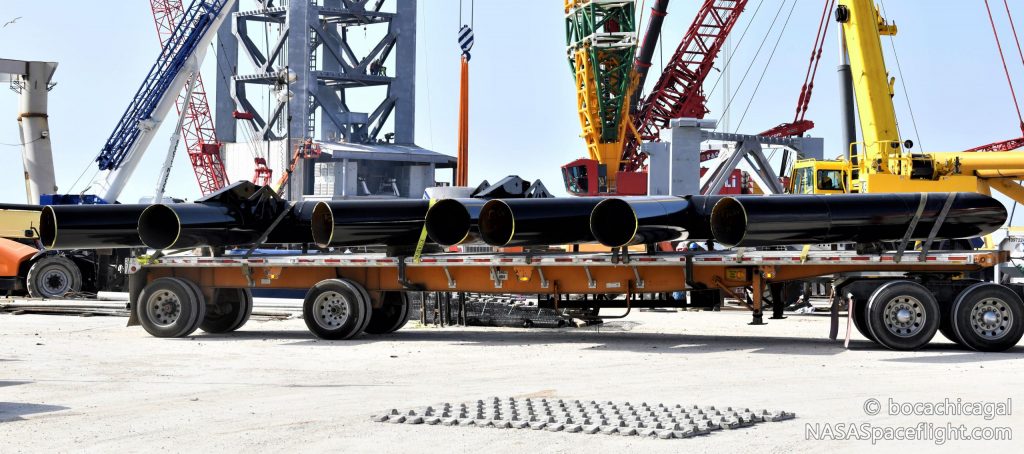
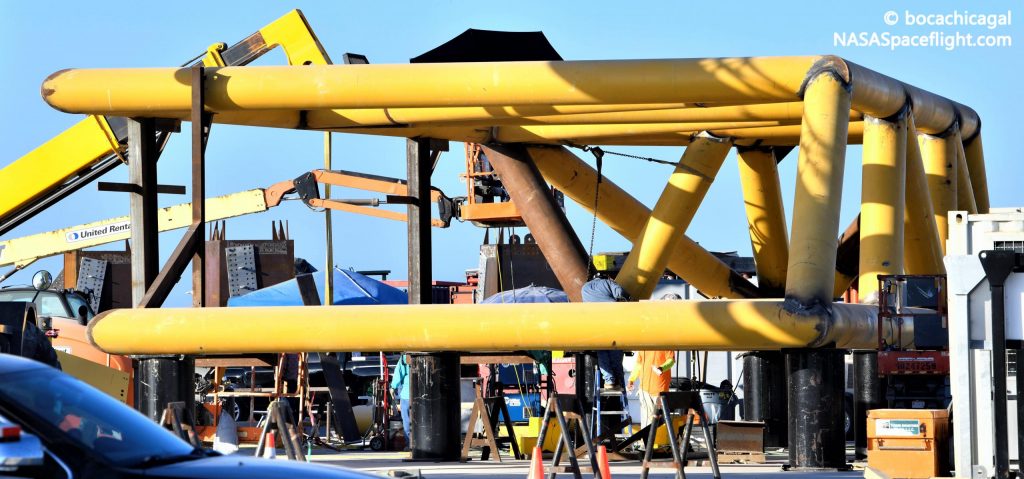
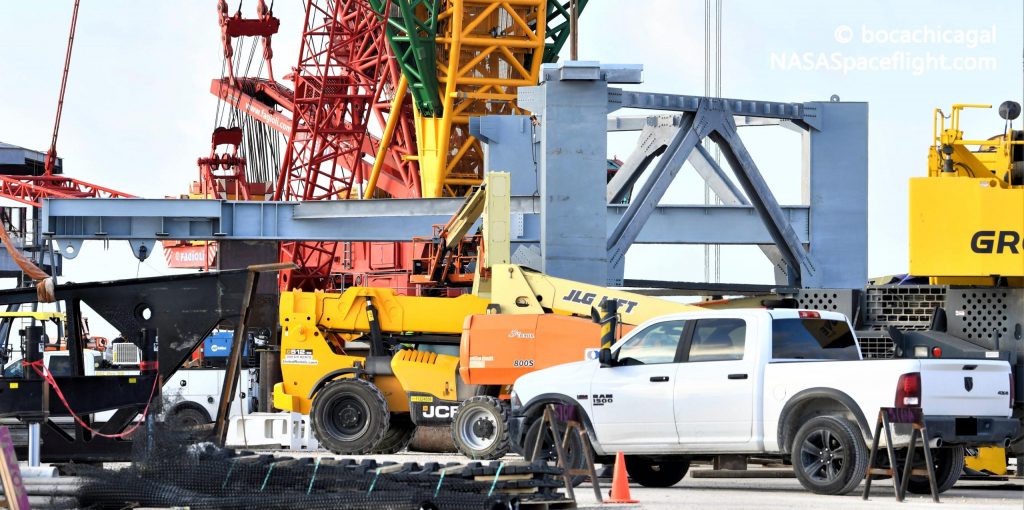
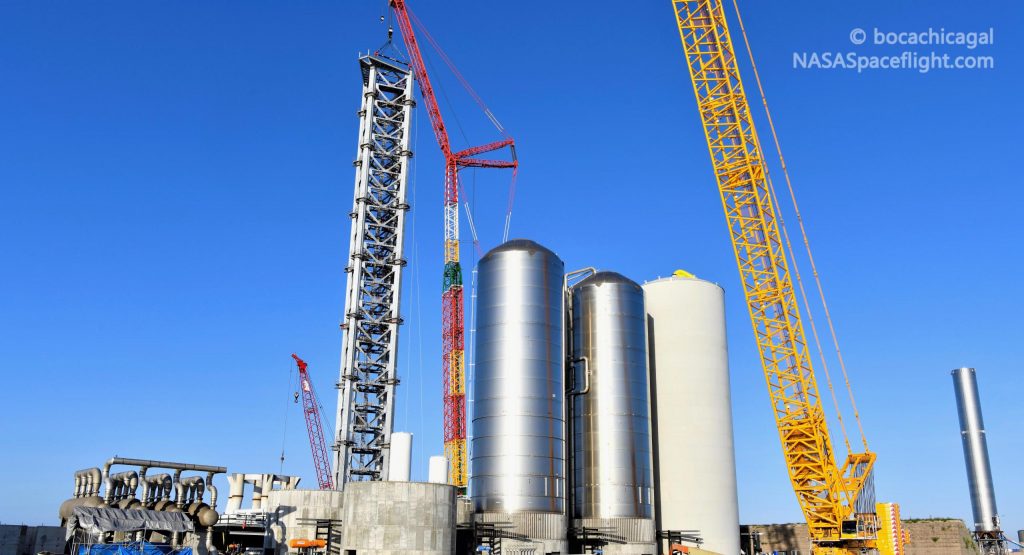

News
Tesla dispels reports of ‘sales suspension’ in California
“This was a “consumer protection” order about the use of the term “Autopilot” in a case where not one single customer came forward to say there’s a problem.
Sales in California will continue uninterrupted.”

Tesla has dispelled reports that it is facing a thirty-day sales suspension in California after the state’s Department of Motor Vehicles (DMV) issued a penalty to the company after a judge ruled it “misled consumers about its driver-assistance technology.”
On Tuesday, Bloomberg reported that the California DMV was planning to adopt the penalty but decided to put it on ice for ninety days, giving Tesla an opportunity to “come into compliance.”
Tesla enters interesting situation with Full Self-Driving in California
Tesla responded to the report on Tuesday evening, after it came out, stating that this was a “consumer protection” order that was brought up over its use of the term “Autopilot.”
The company said “not one single customer came forward to say there’s a problem,” yet a judge and the DMV determined it was, so they want to apply the penalty if Tesla doesn’t oblige.
However, Tesla said that its sales operations in California “will continue uninterrupted.”
It confirmed this in an X post on Tuesday night:
This was a “consumer protection” order about the use of the term “Autopilot” in a case where not one single customer came forward to say there’s a problem.
Sales in California will continue uninterrupted.
— Tesla North America (@tesla_na) December 17, 2025
The report and the decision by the DMV and Judge involved sparked outrage from the Tesla community, who stated that it should do its best to get out of California.
One X post said California “didn’t deserve” what Tesla had done for it in terms of employment, engineering, and innovation.
Tesla has used Autopilot and Full Self-Driving for years, but it did add the term “(Supervised)” to the end of the FSD suite earlier this year, potentially aiming to protect itself from instances like this one.
This is the first primary dispute over the terminology of Full Self-Driving, but it has undergone some scrutiny at the federal level, as some government officials have claimed the suite has “deceptive” naming. Previous Transportation Secretary Pete Buttigieg was vocally critical of the use of the name “Full Self-Driving,” as well as “Autopilot.”
News
New EV tax credit rule could impact many EV buyers
We confirmed with a Tesla Sales Advisor that any current orders that have the $7,500 tax credit applied to them must be completed by December 31, meaning delivery must take place by that date. However, it is unclear at this point whether someone could still claim the credit when filing their tax returns for 2025 as long as the order reflects an order date before September 30.
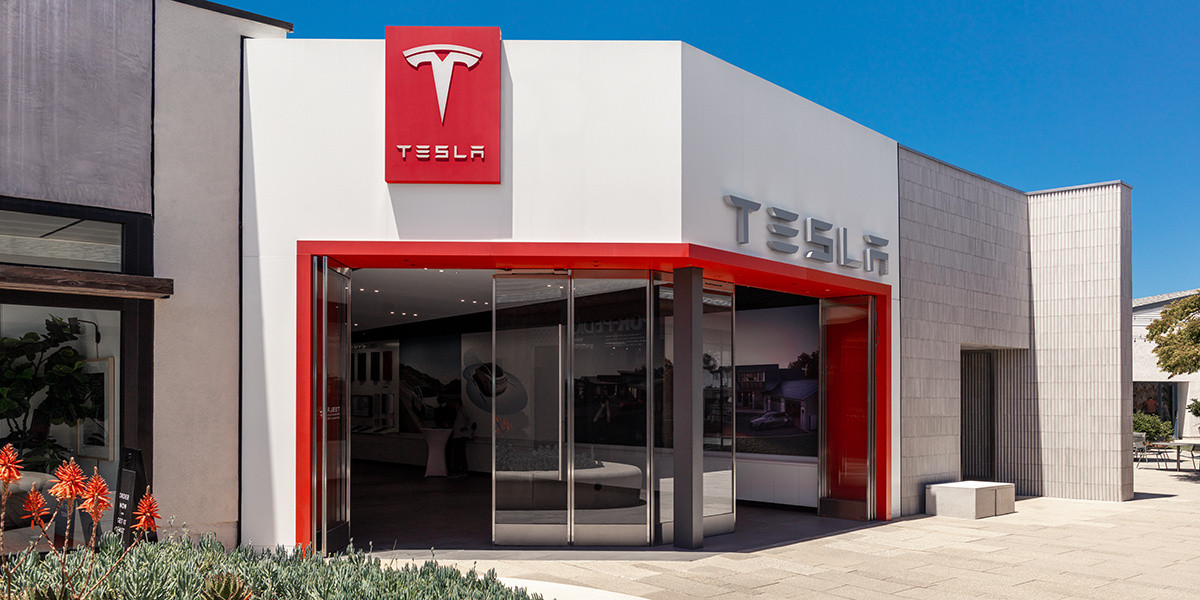
Tesla owners could be impacted by a new EV tax credit rule, which seems to be a new hoop to jump through for those who benefited from the “extension,” which allowed orderers to take delivery after the loss of the $7,500 discount.
After the Trump Administration initiated the phase-out of the $7,500 EV tax credit, many were happy to see the rules had been changed slightly, as deliveries could occur after the September 30 cutoff as long as orders were placed before the end of that month.
However, there appears to be a new threshold that EV buyers will have to go through, and it will impact their ability to get the credit, at least at the Point of Sale, for now.
Delivery must be completed by the end of the year, and buyers must take possession of the car by December 31, 2025, or they will lose the tax credit. The U.S. government will be closing the tax credit portal, which allows people to claim the credit at the Point of Sale.
🚨UPDATE: $7,500 Tax Credit Portal “Closes By End of Year”.
This is bad news for pending Tesla buyers (MYP) looking to lock in the $7,500 Tax Credit.
“it looks like the portal closes by end of the year so there be no way for us to guarantee the funds however, we will try our… pic.twitter.com/LnWiaXL30k
— DennisCW | wen my L (@DennisCW_) December 15, 2025
We confirmed with a Tesla Sales Advisor that any current orders that have the $7,500 tax credit applied to them must be completed by December 31, meaning delivery must take place by that date.
However, it is unclear at this point whether someone could still claim the credit when filing their tax returns for 2025 as long as the order reflects an order date before September 30.
If not, the order can still go through, but the buyer will not be able to claim the tax credit, meaning they will pay full price for the vehicle.
This puts some buyers in a strange limbo, especially if they placed an order for the Model Y Performance. Some deliveries have already taken place, and some are scheduled before the end of the month, but many others are not expecting deliveries until January.
Elon Musk
Elon Musk takes latest barb at Bill Gates over Tesla short position
Bill Gates placed a massive short bet against Tesla of ~1% of our total shares, which might have cost him over $10B by now
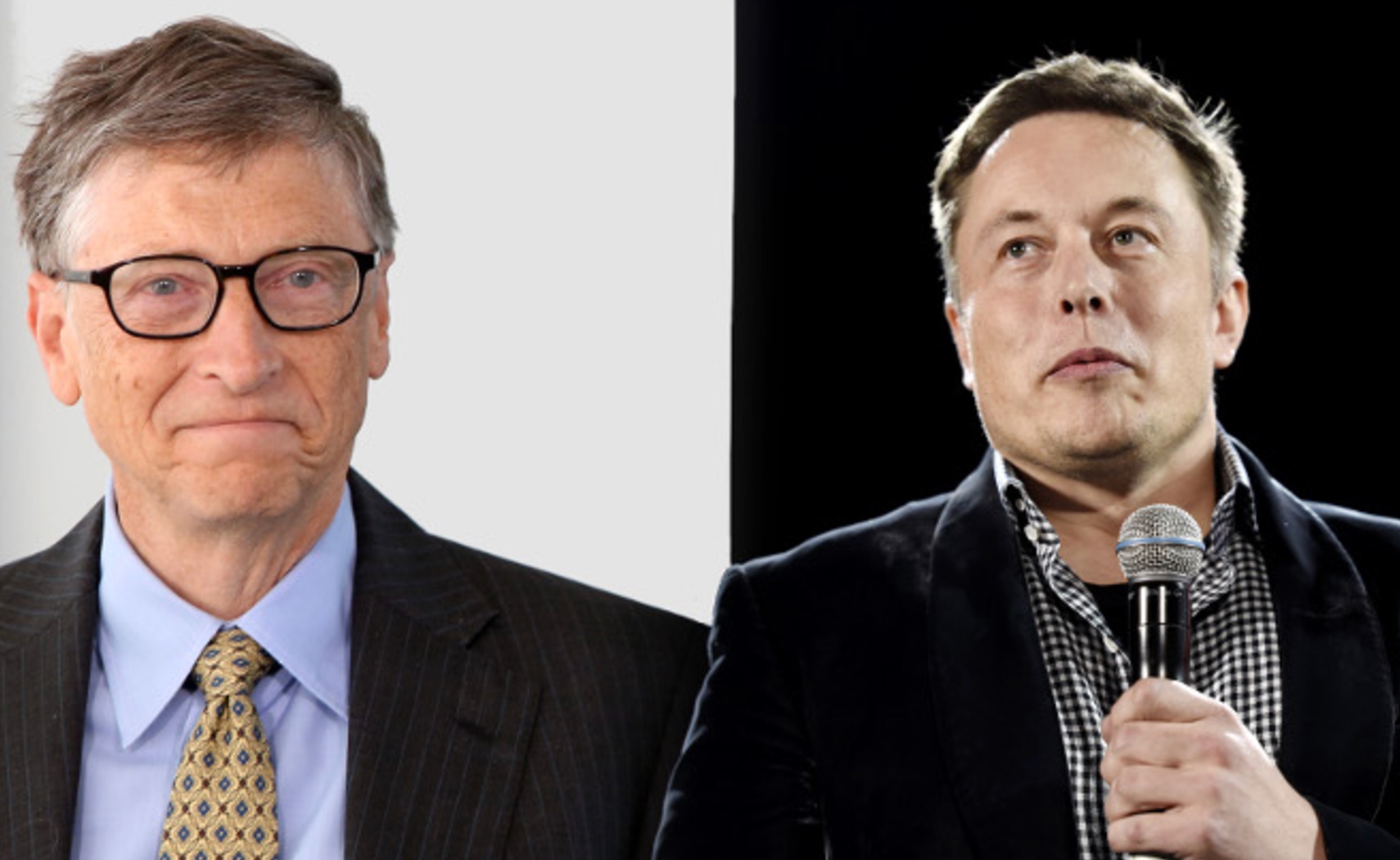
Elon Musk took his latest barb at former Microsoft CEO Bill Gates over his short position against the company, which the two have had some tensions over for a number of years.
Gates admitted to Musk several years ago through a text message that he still held a short position against his sustainable car and energy company. Ironically, Gates had contacted Musk to explore philanthropic opportunities.
Elon Musk explains Bill Gates beef: He ‘placed a massive bet on Tesla dying’
Musk said he could not take the request seriously, especially as Gates was hoping to make money on the downfall of the one company taking EVs seriously.
The Tesla frontman has continued to take shots at Gates over the years from time to time, but the latest comment came as Musk’s net worth swelled to over $600 billion. He became the first person ever to reach that threshold earlier this week, when Tesla shares increased due to Robotaxi testing without any occupants.
Musk refreshed everyone’s memory with the recent post, stating that if Gates still has his short position against Tesla, he would have lost over $10 billion by now:
Bill Gates placed a massive short bet against Tesla of ~1% of our total shares, which might have cost him over $10B by now
— Elon Musk (@elonmusk) December 17, 2025
Just a month ago, in mid-November, Musk issued his final warning to Gates over the short position, speculating whether the former Microsoft frontman had still held the bet against Tesla.
“If Gates hasn’t fully closed out the crazy short position he has held against Tesla for ~8 years, he had better do so soon,” Musk said. This came in response to The Gates Foundation dumping 65 percent of its Microsoft position.
Tesla CEO Elon Musk sends final warning to Bill Gates over short position
Musk’s involvement in the U.S. government also drew criticism from Gates, as he said that the reductions proposed by DOGE against U.S.A.I.D. were “stunning” and could cause “millions of additional deaths of kids.”
“Gates is a huge liar,” Musk responded.
It is not known whether Gates still holds his Tesla short position.








